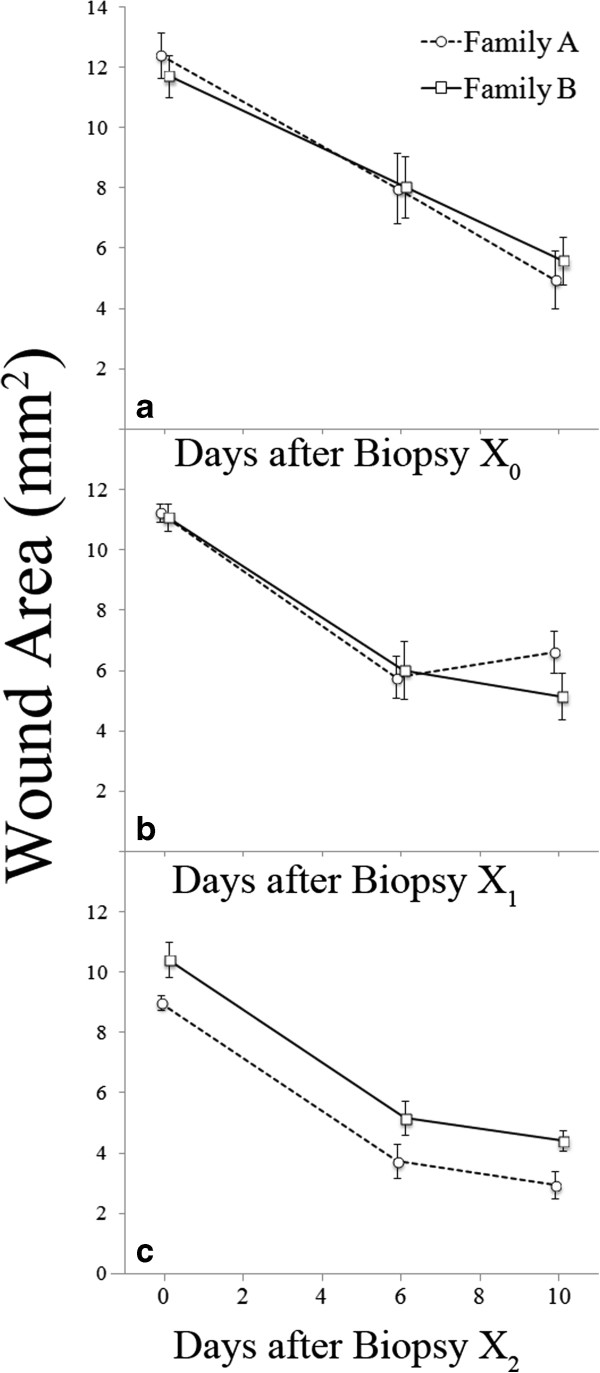Figure 6.

Wound area of juvenile veiled chameleons immediately (D0), six (D6), and ten (D10) days after a standardized dermal biopsy. Throughout the course of the study, the chameleons were biopsied three times: once prior to carotenoid supplementation (a: Biopsy X0) and twice during supplementation in Weeks 14 and 20 of the study (b: Biopsy X1 and c: Biopsy X2, respectively). a) During X0, there was no significant effect of family, treatment, or their interaction (repeated measures: all F1,14 < 0.97, all P > 0.182; mixed model: all F1,30 < 1.94, all P > 0.17). Wound size decreased over time (from D0 to D6 to D10) during X0 (repeated measures: F2,28 = 36.74, P < 0.0001; mixed model: F2,30 = 41.42, P < 0.0001). b) During X1, there was no significant effect of treatment, family, or their interaction on wound healing rate (repeated measures: all F1,12 < 0.86, all P > 0.37; mixed model: all F1,28 < 1.82, all P > 0.19). Again, wound size decreased over time (D0, D6, D10) during X1 (repeated measures: F2,24 = 55.04, P < 0.0001; mixed model: F2,28 = 58.79, P < 0.0001). c) In contrast to X0 and X1, during X2 there was a significant effect of family of origin on wound size (repeated measures: F1,15 = 10.60, P = 0.005; mixed model: F1,30 = 10.60, P = 0.0028), though again wound size decreased over time (D0, D6, D10; repeated measures: F2,30 = 96.51, P <0.0001; mixed model: F2,30 = 96.51, P <0.0001). Specifically, family A had consistently smaller wounds than family B on all measurement days (D0, D6, and D10) during X2. Points represent mean values with standard errors calculated from raw data.
